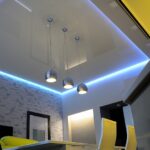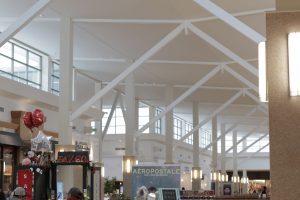LED lighting. “What exactly is it?” you may ask. Well, the technical definition of LED (light-emitting diode) is a two-lead, semiconductor light source, which emits light through an effect called electroluminescence. Does that sound like a mouthful? Let’s take a closer look at how LEDs work and some questions you may have about converting.
Is LED lighting safe?
If you have ever looked closely at a traditional light bulb, you know that it works by sending electricity through two prongs with a thin strand of wire between them. This is a costly process, which emits more heat than light. In LED lights, this apparatus’s size is in the form of a p-n junction that is reduced to about 1-2 mm in size, using a reflector cavity to produce light. The amount of heat generated in the bulb is significantly reduced b. LEDs are a far safer choice for business and home lighting.
How do LEDs affect the environment?
One aspect of LED lighting you will find appealing is the carbon footprint left behind for the environmentally conscious. The typical 40-watt household light bulb will generate around 200 pounds of Co2 emissions per year. The LED equivalent, a 6-watt bulb, only produces around 30 pounds. That is 85% less harmful effects on our planet! Considering that LEDs are also Mercury-free, they are the superior choice from an ecological perspective.
How long will LEDs last?
An important issue for all business owners is saving money. While prices are still considerably higher than current lighting options, as with any technology, LEDs are becoming more affordable every day. If you choose a standard 4-pack of With 60-watt incandescent lights at around $18, you can expect each bulb to last around 1,200 hours. An 8 watt LED, purchased at around $14 each, has a life span of around 50,000 hours! The comparison is uncanny when it comes to which is the better deal.
In addition to the longevity of LEDs, they are also extremely reliable. Gone are the days of flipping on a light switch and hearing that tell-tale ‘POP” and the flash of a bulb blowing. When LEDs are approaching the end of their lives, there will be a gradual decrease in the light’s brightness over time.
Will I see a difference in my monthly power bill?
Let’s face it, the bottom line matters. Knowing how any decision will impact your budget will always be a leading factor in any improvement or upgrade decision. On average, about 25% of your monthly bill is attributed to light bulb use. This translates into about $1,000 a year based on the average rate of kilowatt-hours (around 12 cents an hour) using only standard bulbs. When replaced with LED lights, this cost drops dramatically to around $120. When we look at the yearly savings of over $800, it becomes even more apparent that LED lighting pays off in the long run.
When looking for ways to stretch your dollar, it often pays to spend more now to ensure long-term savings. In today’s world, where the cost is continuously rising, any investment that saves money by a margin can be seen as the superior choice.






